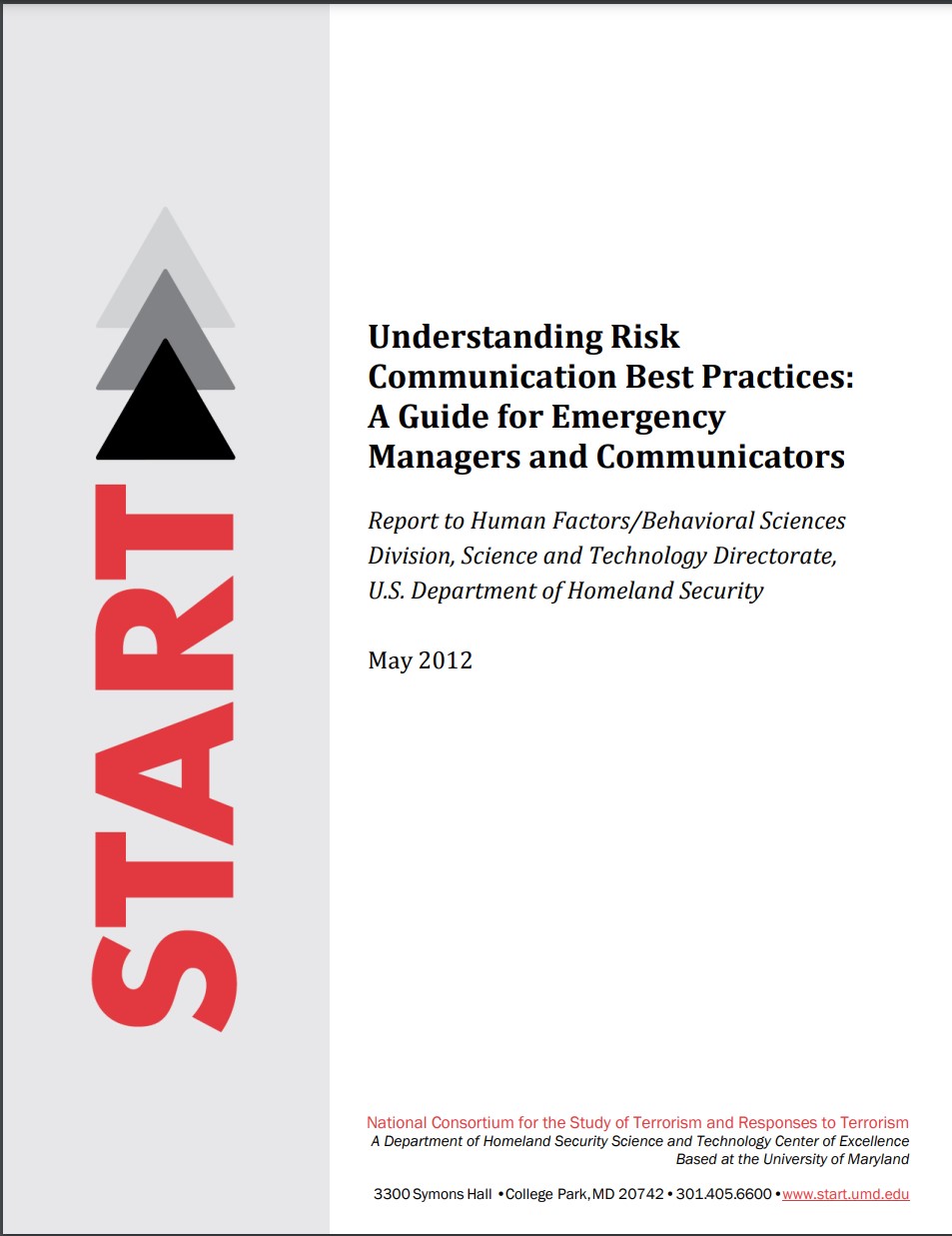I appreciate revisiting seminal papers often when I’m thinking through key risk concepts. This document represents the state of the art of risk communication thinking in 2012 and was available as an open educational resource – a crucial element for me in designing a course.
One of the many questions that I’m intrigued by is the difference between crisis and risk communication. I differentiate between the two as a crisis is an immediate issue that needs to be addressed while a risk is something that has not yet happened.
Currently, I’m thinking of the following key differences:
- Timing: Crisis communication needs to be relevant to the moment and address the decision-making capabilities of those who need to respond during an abbreviated period. For risk communication, it still needs to address decision-making criteria, albeit with a longer time horizon.
- Content: With a crisis, you are in response mode. With a risk, you are in preparedness mode. Content will be different depending on the phase you are in.
- Length: Crisis communication needs to be brief and focused, while risk communication can have a bit more context wrapped around it.
- Another thought that occurred to me as I was writing this is that crisis communication is not something I’ve seen in an enterprise risk management (ERM) context. Since ERM addresses both the upside and downside of risk, I’m thinking that crisis communication only addresses the downside. Just a reminder that we’re not looking at ERM in the class, although it’s where I spend a lot of my time these days.
I am also reminded of some early training that I received in crisis communications. The instructor referred to crisis communications as both a science and an art – much like how Olympic Ice Skating used to be evaluated. The example used during the class (which was in the 1990s and I’m astonished I still remember this – never underestimate the power of good storytelling!) was that the Exxon Valdez spill scored a 10 on the science and a 0 on the art of communicating that science (as did the Deep Water Horizon spill, but we’ll save that topic for another day). In contrast, the Tylenol murders scored a 10 in both science and art given that J&J pulled all Tylenol from the shelves to ensure that people still had trust in their product. Based on a student’s comment, I am wondering about what a consequence table for risk communication could look like…
Note: I had to read this article to brush up on how Olympic ice skating is scored today, but I believe my example still holds.
As we know, there is always a difference when theory meets reality. The question of COVID communications came up throughout this week’s class discussion. In reviewing my previous posts, I found this work product that I had built in my digital storytelling course, which happened to coincide/collide with the onset of the pandemic.
I think the primary challenge around these communications reflected whether someone was personally invested in protecting themselves and/or was willing to help to reduce the overall community exposure – these are different objectives and require different communication strategies.
My personal viewpoint is that wearing a mask reduces the likelihood of me contracting the dz. Getting the vaccine reduces the consequences. While I’m current on vaccinations, I’ve chosen to wear a mask whenever I’m on public transit, although I understand that this presents a false sense of security on my part, given I’m in a workspace with people who did take public transit and didn’t wear a mask. And as we prepare for our upcoming move, my family and I are masking in public for the next two weeks to minimize the likelihood that COVID decides it wants to make the trip North with us. I simply don’t have time to be ill and I’m willing to bear the discomfort of a mask for this brief duration. And you can read this article if you’re interested in what the COVID experts are thinking wrt about this fall.
I’m interested to see what happens next wrt pandemic communication given that some analysts think that we could have other pandemics immediately following this one. And reflections should always yield more questions. How will we respond as a nation? What would it take to have people invested in more than their own personal safety? Is this related to risk culture or risk appetite and how would I deconstruct the two? Will different cultures respond differently and why? What changes to risk communication strategies would yield better outcomes?
